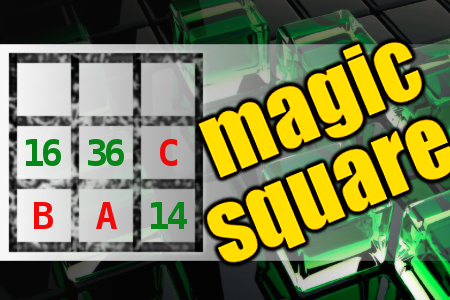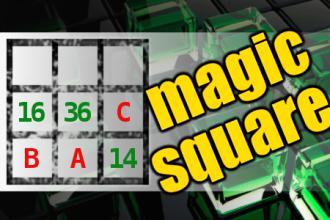MAGIC SQUARE: Calculate A+B*C
The aim is to place the some numbers from the list (12, 14, 16, 34, 36, 38, 72, 74, 76, 82) into the empty squares and squares marked with A, B an C. Sum of each row and column should be equal. All the numbers of the magic square must be different. Find values for A, B, and C. Solution is A+B*C.Correct answers: 15
The first user who solved this task is Nasrin 24 T.
#brainteasers #math #magicsquare


